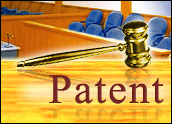
Patent laws remain in the crosshairs, despite the passage and near final implementation of the infamous America Invents Act of 2011. The Supreme Court is again hearing a case that has far-reaching implications for future innovation in self-replicating systems in fields such as nanotechnology, cell and DNA lines, new medical treatments and others. The case being heard Tuesday is Bowman v. Monsanto.
Indiana farmer Vernon Bowman bought Monsanto Roundup Ready soybean seeds for his crops, like most farmers, for their advantageous properties. Monsanto scientists over the past decades have manipulated various chimeric genes in soybean and other plants to make them herbicide-resistant, particularly to glyphosates.
As any farmer or gardener knows, weeds are the bane of all cultivation. Monsanto’s patented products allow simple spraying to kill all weeds around a plant, which itself is genetically immune to the toxicity. Naturally, farmers have bought large quantities of these miracle seeds to grow themselves.
However, as patentee of the genetically engineered plants, Monsanto has tried to control the usage of these new and improved seeds. Monsanto’s contracts with the farmers — who readily signed, including Bowman — were express and quite unequivocal: one planting only. Monsanto well knew that it had to keep control of any subsequent usages of the first-generation plants, e.g., replanting into second, third or more generations.
A Good Deal
Although in the abstract this sounds harsh to some people — i.e., keeping farmers from replanting — those same farmers took full advantage of the extraordinary benefits of the Monsanto products, eliminating losses due to a variety of natural pests and greatly increasing their crop yield and profit. The deal, in other words, was a very good one, as evidenced by the majority of farmers signing the Monsanto contracts and honoring the single planting restriction. This modern paradigm works quite well.
Naturally, there are those who wish to have the advantages without paying Monsanto, and without being restricted in replanting, such as Bowman, a known contrarian. Although he has employed the mantra of the poor farmer being prevented his livelihood, this does not ring true. Bowman deliberately used unlabeled, errant product from Monsanto for personal gain, well knowing that to do so was improper.
Unfortunately, the facts of this case muddy the situation somewhat, and those seeking to curb patents further have taken up Bowman’s cause, claiming that the patent laws are too broad and must be further curtailed, and that patentees such as Monsanto are somehow exploiting their customers. Bowman and his proponents apparently advocate dedicating all self-replicating technologies to the people.
Of course, along with producing a crop, plants produce seeds for their propagation. Monsanto restricted the usage of the seeds from its first-generation products to livestock or animal feed. However, crop silos housed seeds from various planters in a region — planters who used natural seeds, along with others who employed the first-generation Monsanto product, admixing the two into a so-called commodity feed.
Self-Replicating Software
Although Monsanto’s contracts limited its farmer customers’ second-generation usage to this commodity or animal feed, Monsanto had no contract, as such, with the silos. Seeking to have a second planting in a season, Bowman bought this commodity feed from the silos, which included the herbicide-resistant product owned by Monsanto, by his own admission. From various statements, it appears that Bowman counted on obtaining the Monsanto product this way without paying Monsanto.
Bowman then used the seeds from the second planting in subsequent plantings, taking full and knowing advantage of the Monsanto crop advantages. Monsanto was not pleased and ultimately sued him for patent infringement.
Caught with his hands in a Roundup jar, Bowman asserted patent exhaustion — i.e., he bought the commodity seed and was entitled to do whatever he wished with it, including making future plantings from the seeds. To farmers, this is the natural order of things: They plant, harvest crops and seeds, and then replant.
However, technology found a way to greatly increase the crop yield — Monsanto’s extensive molecular biology R&D changed the paradigm. As this technology involves self-replicating features, Bowman’s assertion is problematic, and not just for biological creations. For example, software involves the creation of further software. Thus, Microsoft and Apple have weighed-in on behalf of Monsanto.
Seedy Subterfuge
The last Supreme Court case on patent exhaustion, Quanta Computer, Inc. v. LG Electronics, Inc. (2008), involved computer chips, which are of course a non-self-replicating commodity. The Court expressly noted that an unconditional sale exhausts the patentee’s rights or control over the product, which makes sense. You buy a thing (or at least a “substantial embodiment” of a thing per the Court) and can control that thing. The patentee thus relinquishes its rights to the item sold.
As is clear, however, Monsanto never made an unconditional sale of its product. Each sale had the no-second-planting restrictions. However, the silo sales were outside Monsanto’s domain and were not so controlled. Thus, does a condition imbue within the product that transcends the silo sale? Bowman certainly knew without a doubt that he had bought Monsanto’s patented product and deliberately used it and made further crops. The improper usage of a patented product or process is infringement.
The district court found Bowman guilty of patent infringement, and the Federal Circuit Court of Appeals in affirming held that the doctrine of patent exhaustion did not apply. The reasoning was that the commodity seeds sold did not substantially embody the herbicide-resistant product, which was sold for animal feed and such.
Further, the court held that in his purchase of the commodity seeds Bowman did not accrue the patentee’s rights to the technology or the right to duplicate the patented technology — that right to make remains with the patentee. Bowman thus cannot subvert the patent laws by this subterfuge. Bowman, at best, has the right to use only — the right to use the commodity seeds but not any progeny seeds. Per the court, each progeny seed Bowman planted created an unauthorized version of the patented invention.
Patents Aren’t Forever
This right to control over self-replicating technologies is an important issue. Companies like Monsanto will not invest in the research and development to create genetically engineered marvels if farmers or others can subvert the entire process.
This issue has far more currency in the new medicines that employ living organisms and require billions to bring to market. Further, with the rise in nanotechnology, which can employ self-replicating devices, this issue is quite germane. Thus, all eyes turn to the Supreme Court for its wisdom.
Although Justices, including Scalia, have noted the importance of patent laws and the need to preserve them, other Justices, notably Breyer, have found fault with just about every aspect of patent law. The patent bar is eager to learn how newer Justices Sotomayor and Kagan rule in this decision.
Should the Supreme Court equate the unconditional sale of a chip that can only be used singly with the qualified sale of a living thing that can be proliferated indefinitely and rule that both result in patent exhaustion, then many industries and future research may suffer.
These possible or likely disturbances of established understandings is something to gravely consider. The Court will most likely find in favor of Monsanto and hold that self-replicating technologies are not automatically exhausted by such sales. Of course, Monsanto and other such developers of self-replicating technologies can be more diligent in the contracting, such as with the silo operators, thereby ensuring rights all around.
To those against patents, who deem patentees greedy per se, it should be noted that patents are quite limited. The basic research here on the Roundup-resistant crops was done long ago, and the first patents are expiring — a different type of exhaustion.
Thus, the technology will soon enter the public domain, allowing greater competition. Of course, Monsanto has created and patented improvements, which may extend its market dominance for some time longer. Nonetheless, patents are ephemeral and not perpetual — our Founding Fathers put express temporal limits on patents, now 20 years from original filing date.
In getting to the root of patent exhaustion, the Court will hopefully leave innovation safe for future creators to plant their own seeds and generate new discoveries.

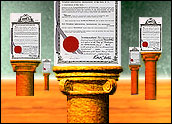
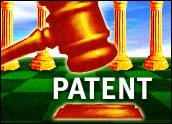

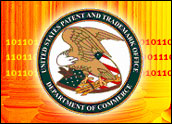
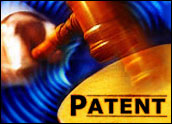











































Social Media
See all Social Media